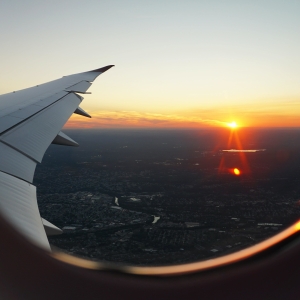Animals are one of the most diverse and intriguing aspects of life on Earth. From the majestic elephants of Africa to the elusive snow leopards of the Himalayas, the animal kingdom offers endless opportunities for learning and exploration. But beyond their beauty and mystique, animals play an essential role in maintaining the delicate balance of ecosystems, shaping the world we live in.
In this blog, we’ll explore why animals are so vital to our planet, how human activities are impacting their populations, and why it's more important than ever to protect them.
1. The Importance of Animals in Ecosystems
Every animal, from the tiniest insect to the largest mammal, plays a critical role in its ecosystem. In fact, ecosystems rely on the interactions between animals and their environment to stay healthy and balanced. When an animal species disappears, it can create a ripple effect, disrupting the entire ecosystem and affecting many other species—humans included.
Key Roles of Animals in Ecosystems:
- Pollinators: Bees, butterflies, and other insects are essential for pollination, which is necessary for the reproduction of many plants, including crops. Without pollinators, our food supply would be severely limited.
- Predators: Top predators, like wolves, lions, and sharks, help regulate populations of other animals. By controlling the number of herbivores or smaller predators, they prevent overgrazing and the depletion of plant life.
- Decomposers: Scavengers such as vultures, fungi, and certain types of bacteria play a vital role in breaking down dead organic matter, which helps recycle nutrients back into the soil and ensures the health of ecosystems.
- Seed Dispersers: Many animals, such as birds, bats, and squirrels, help spread seeds as they forage or migrate. This helps maintain plant diversity, which is vital for a healthy ecosystem.
2. The Impact of Human Activities on Animal Populations
While animals are crucial to maintaining the balance of nature, human activities have had a significant negative impact on wildlife populations. From deforestation to climate change, our actions are pushing many species to the brink of extinction.
Major Threats to Wildlife:
- Habitat Destruction: Deforestation, urbanization, and industrial development are destroying the natural habitats of many animals, leaving them without places to live, hunt, or reproduce.
- Climate Change: Rising global temperatures, shifting weather patterns, and ocean acidification are altering the environments in which many animals live. Species that are unable to adapt quickly enough may face extinction.
- Poaching and Illegal Wildlife Trade: Many animals, such as elephants, rhinos, and tigers, are targeted for their body parts, such as ivory, fur, or bones. This illegal trade is a significant threat to wildlife populations.
- Pollution: Pollution, including plastic waste, chemicals, and oil spills, has devastating effects on animals. Marine life, in particular, suffers from plastic ingestion, while chemical pollutants can disrupt reproductive systems in many species.
3. The Role of Conservation in Protecting Animals
The good news is that there are many efforts around the world aimed at protecting animals and their habitats. Conservation organizations, governments, and local communities are working together to save endangered species, restore ecosystems, and combat the causes of habitat destruction.
Conservation Strategies:
- Protected Areas: National parks, wildlife reserves, and marine protected areas help safeguard habitats and provide animals with safe spaces to live and reproduce without human interference.
- Captive Breeding and Reintroduction: For some critically endangered species, captive breeding programs help increase their populations. Once they have reached a certain number, they are reintroduced into the wild to help repopulate areas where they were once extinct.
- Anti-Poaching Laws: Governments and organizations around the world are implementing stricter laws and penalties to combat illegal hunting and wildlife trafficking. For example, rhino poaching has been reduced in some countries due to increased law enforcement and international collaboration.
- Habitat Restoration: Many conservationists are working to restore natural habitats by replanting forests, cleaning up polluted rivers, and protecting coral reefs. These efforts help create healthier environments for wildlife to thrive.
4. How We Can Make a Difference
While large-scale conservation efforts are crucial, everyday actions can also help protect animals and the environment. Each of us can play a role in ensuring that wildlife thrives for generations to come.
Simple Ways to Help Protect Animals:
- Support Conservation Efforts: Donate to wildlife organizations or volunteer with local conservation projects. Many organizations are working hard to protect endangered species and their habitats.
- Reduce Your Carbon Footprint: Fight climate change by reducing energy consumption, using sustainable transportation, and supporting clean energy initiatives. This helps preserve ecosystems for animals that are vulnerable to climate-related changes.
- Reduce Plastic Use: Wildlife, especially marine animals, suffer from plastic pollution. By reducing your plastic consumption and properly recycling, you can help minimize the impact of plastic waste on animal habitats.
- Advocate for Animals: Use your voice to raise awareness about wildlife conservation. Whether it’s through social media, petitions, or simply talking with others, raising awareness about the threats animals face can inspire action.
- Choose Sustainable Products: Support companies and brands that prioritize sustainability and ethical sourcing of materials. This includes choosing products made from sustainable materials and avoiding those that contribute to deforestation or wildlife harm.



